HOW TO USE THE LECTIONARY
OUR PURPOSE
The Lectionary/Te Maramataka is produced each year to help meet the worship needs of the Anglican Church in Aotearoa, New Zealand and Polynesia. It provides the information you need to plan the Eucharist or other services and to say the Daily Offices on a regular basis. It puts in convenient form many of the provisions of The New Zealand Prayer Book/He Karakia Mihinare o Aotearoa (ANZPB/HKMOA), and introduces elements from other sources which we believe will be of benefit to the Church. It is important to bear in mind that a lectionary is not so much a daily Bible reading scheme as a provision for reading the Scriptures in the course of the daily round of worship of the Church. Thus, most, but not all, of the Bible is read.
HOW TO USE THE LECTIONARY
The Lectionary gives details of the full range of possibilities offered by the liturgical calendar. It offers many choices to suit the needs of individuals and parishes or groups who meet to pray. For each day we indicate the day’s special character. Reference is made to the season and to the character of the day. If the day is a feast or holy day that is indicated in bold type and by the date being given greater prominence. Other commemorations are indicated in ordinary type. The smaller letter(s) under the date refer to the day’s recommended colour. Further details are given later.
It is customary in the Eucharist to add special words to the Great Thanksgiving when it is desired to emphasise the special character of the season or day. These words (known as Variation) are found in ANZPB/HKMOA. Further details are given later.
ON SUNDAYS AND OTHER SPECIAL DAYS
The date is highlighted and reference made to the day’s title in the revision of ANZPB/HKMOA.
1st and 2nd columns
The readings are based on the Revised Common Lectionary (RCL) a 3-year cycle used in many churches of differing traditions throughout the world. One feature is its use of a particular gospel for the whole year. 2022-2023 is Year A and the Gospel readings are mostly from Matthew. The RCL has been adapted for use in a revision of ANZPB/HKMOA. This material can be accessed through the General Synod website at: http://www.anglican.org.nz/Resources/Lectionary-and-Worship
On a few occasions where provision is not made in RCL or in ANZPB/HKMOA, material has been included from Common Worship, an adaptation of the Revised Common Lectionary for use in the Church of England (CW). For the Sundays after Trinity Sunday two alternatives (for the Psalm and OT readings) are provided. You should choose one of these options and remain with it throughout the period. It is unhelpful to move from week to week from one column to another. One column should be followed for the whole sequence of Sundays after Trinity.
Related – relates the Old Testament reading and the psalm to the Gospel reading of the day, indicating that all revelation and human experience is focused in Christ.
Continuous – a semi-continuous reading of the Old Testament which allows that reading and its psalm to stand independently of the other readings. This allows for preaching on the OT in its own right, just as the Gospel readings allow for consistent preaching from a particular gospel throughout the year.
3rd column
Other Readings: Morning: Psalms and readings are provided under the heading. These are related to RCL, but the readings are shorter and are intended for public worship where a third set of readings is required. This is most appropriate as a morning office. It is not suitable for use in the Eucharist, as a Gospel reading is not always provided.
4th column
Other Readings: Evening: Psalms and readings are provided under the heading. These are intended for a second main service. This may be an appropriate option for those who wish to have a Sunday afternoon or evening service, as they make provision for those who wish to have greater variety during the day. It assumes that the RCL material will have been used in morning worship. It is also available for those who wish to use it for an evening office.
ON WEEKDAYS
1st column
The readings from the Daily Eucharistic Lectionary (DEL) are suitable for weekday celebrations of the Eucharist when no other provision is made or when you decide not to use the commemoration of the day. These readings may also be used for a single daily office, if desired.
The DEL (based on the Roman Catholic Daily Eucharistic Lectionary) is a semi-continuous two year lectionary with a wide use of scripture, though not complete coverage of the Bible. Two readings are provided for each day, the first from the Old or New Testament, the second always a Gospel. Psalm provision is intended to be a brief response to the first reading.
2nd column
FAS (For All the Saints) refers to material provided for each commemoration listed in the Calendar in ANZPB/HKMOA.
3rd and 4th columns
The daily readings for Morning and Evening Prayer (MP and EP) are from the revised edition of the Common Worship Weekday Lectionary from the Liturgical Commission of the Church of England (GS 1520). This is based on the principle of consecutive reading (lectio continua) interrupted only by significant days. The books are allocated according to the shape of the Christian year, e.g. Isaiah in Advent, the Pentateuch in Lent and Eastertide, and Revelation in Advent and Eastertide.
The material included under MP is suitable for use at a daily recitation of the Office especially where there is a regular congregation or for a morning office.
The material included under EP is suitable for use at a daily recitation of the Office perhaps with an occasional congregation, or at an occasional office or time of prayer, or for an evening office.
THE PSALMS
The psalms in ANZPB/HKMOA are arranged by days, morning and evening, but for those who prefer a shorter provision, psalm cycles are provided for use at Morning and Evening Prayer. For large tracts of the year a consecutive reading of the psalter is provided but during seasons several ‘seasonal’ psalms with a particular emphasis appropriately repeated are provided. Bracketed psalms may be omitted if they have been used as the opening canticle. Longer psalms (*) may be shortened if desired. References to the Psalms are to the ANZPB/HKMOA Psalter.
Celebrating Common Prayer
Those who use Celebrating Common Prayer: A Version for Aotearoa, New Zealand, and Polynesia can make use of The Lectionary, especially in relation to choosing the readings.
CCP follows a pattern relating to seasons by which each day of the week has a flavour of its own corresponding to a church season (e.g. Friday in relation to the Passion).
During the Seasons, various Forms are used:
Form 1 (Eastertide until Ascension), Form 2 (from the Friday after Ascension until the Day of Pentecost), Form 3 (Advent), Form 4 (Christmastide), Form 5 (Epiphanytide), Form 6 (Lent and Passiontide) and Form 7 (All Saints to Advent).
During Ordinary Time, a 7-week cycle is followed, starting with Week 7 from the weekdays after Pentecost, then Week 1, 2, 3 etc until Advent. The same system is followed in the period between the Presentation and Shrove Tuesday.
The reference to Celebrating Common Prayer in the Lectionary indicates the Form or Week to be used during the week. Those using CCP will probably prefer to use the Psalter provided in that book.
COLLECTS
Collects for use on Sundays and other special days are provided in a number of resources.
1. The collects printed in ANZPB/HKMOA 2020 Edition, and in the online Prayer Book, are an updated version of those the General Synod/ Te Hīnota Whānui 2010 approved as an allocation of collects from the material in the original ANZPB/HKMOA, pages 549ff, to fit the RCL readings for Sundays, Major Feasts and Holy Days. These are included in this Lectionary and are also available in English and Maori here: https://www.anglican.org.nz/Resources/Worship-Resources-Karakia/Collects-Sentences-and-Readings. The collects printed in earlier editions of ANZPB/HKMOA (before 2020) relate to the 2-year series and do not usually relate to other sets of readings. Using these with RCL will frequently result in a mismatch. However, each RCL entry in this Lectionary suggests a suitable collect from this earlier printed form. For example, where the suggested collect is ‘Pent 16.2’ that is a reference to Pentecost 16, and to the second collect provided (original ANZPB/HKMOA, p.625) ‘God of mercy….’. Similarly, the reference to ‘Pent 3:3’ is to the third collect for Pentecost 3, on p. 609 ‘God of unchangeable power…’.
2. A collection of trial collects in traditional form for use with A New Zealand Prayer Book He Karakia Mihinare o Aotearoa may be found here: https://www.anglican.org.nz/Resources/Worship-Resources-Karakia/Collects-Sentences-and-Readings. These may be used with the following citation: ‘© The Anglican Church in Aotearoa New Zealand and Polynesia, 2019 used with permission’ Collect endings: page 549 of ANZPB/HKMOA has been revised and is awaiting confirmation by GSTHW.
3. Collects written specifically for use with RCL are published in Revised Common Lectionary Prayers (Consultation on Common Texts, compilers of RCL).
4. Collects in A Prayer Book for Australia have been reprinted in New Zealand for each of the three years of the cycle.
Collects for each commemoration and other days and seasons are included in For All the Saints (FAS).
A common practice is to use the collect for Sunday during the whole week from the "first Evensong" (on the Saturday night before) until the following Saturday morning. When other provision is made there is reference to it in The Lectionary. It is common also to add the collect for the day's commemoration.
COMMEMORATIONS SET ASIDE THIS YEAR
When a commemoration falls on a Sunday or major feast day, it usually lapses. Full details of the readings for the days so omitted are set out on the page which includes the date of such commemoration.
LITURGICAL COLOURS
The colours suggested for each day are shown in the left hand column under the date. They are not mandatory but reflect common practice in most parishes. Traditional or local uses may be followed where established. Please refer to the Liturgical Colours section on a later page.
The abbreviations mean: W for white, R for red, V for violet, and G for green. When, e.g. Vw is shown, this means that V (violet, the colour for the season) may be used, but if the commemoration for the day is observed, it may be appropriate to use white.
If two colours are indicated, one under the other; that suggests that the second colour may be used in the evening. This is most commonly the case on the day before a major feast. For further details refer to http://www.anglican.org.nz/Resources/Lectionary-and-Worship/Authorised-Services-Formularies-including-A-New-Zealand-Prayer-Book-He-Karakia-Mihinare-O-Aotearoa and scroll down to Notes on the Calendar/Te Maramataka, and Precedence in Liturgical Observance.
THE LECTIONARY PROVIDES A LOT OF OTHER INFORMATION
Seasonal material
Each day has a flavour of its own. Worship in the Eucharist can be enhanced if you insert seasonal material. The Great Thanksgiving for each Eucharistic service in the Prayer Book provides seasonal variations. A suggested variation is indicated each day. e.g. Var: Easter, Saint suggests that you use the variations for Easter (e.g. p.432), and for the Feasts of Saints (e.g. p.435). Take time to make sure these are inserted at the right place. As each season approaches, there is reference to seasonal Sentences, Prayers and Readings.
It provides a calendar for the 13 months from the beginning of the church year to the end of the following calendar year. A 2024 Calendar is also included.
It gives details of all holidays and days of significance in nations within this Church and to other days of significance, shown in upper case in [closed brackets].
It gives details of New Zealand state school terms and holidays.
It provides a list of all Bishops in this Church, including those who have retired, with their dates of episcopal ordination/consecration.
WHERE DOES THIS MATERIAL COME FROM?
New Zealand
A New Zealand Prayer Book/He Karakia Mihinare o Aotearoa. The latest edition may be found here: NZPB/HKMOA
For All the Saints : (copyright: The Anglican Church in Aotearoa, New Zealand and Polynesia) provides sentences, collects, psalms, readings and background material relating to each commemoration provided for in the Calendar (indicated by FAS). The 2015 edition can be accessed through General Synod Office or online http://www.anglican.org.nz/Resources/Lectionary-and-Worship
Celebrating Common Prayer: A Version for Aotearoa, New Zealand and Polynesia (Common Life Liturgical Commission) is an adaptation of CCP and Daily Office SSF. Available through General Synod Office. English and Māori versions may be downloaded from:
http://www.anglican.org.nz/Resources/Lectionary-and-Worship
Ashes to Fire: Liturgy for the Seasons of Lent and Easter, prepared by the Tikanga Pakeha Liturgical Working Group, adopted as alternative services by General Synod, 2010. This may be downloaded in pdf. format from http://www.anglican.org.nz/Resources/Lectionary-and-Worship
Sentences, Collects and Readings for use in Years A, B, and C, approved by General Synod in 2010, are also available at http://www.anglican.org.nz/Resources/Lectionary-and-Worship
Australia
A Prayer Book for Australia (Broughton Books, 1995) provides sentences and collects for Sundays and other days relating to the RCL in each of the three years of the cycle.
England
The Revised Common Lectionary (Canterbury Press, 1992) (copyright 1992 Consultation on Common Texts) provides the readings for the 3-year RCL series. More recent publications have made adaptations to RCL. These include: The Christian Year: Calendar, Lectionary and Collects (Church House Publishing, 1997) (Copyright: The Central Board of Finance of the Church of England), from which the alternative readings for Sundays and major feast days (shown under Other Readings: Morning and Evening) come. This material is now included in one of the Prayer Books published by the Church of England: Common Worship: Services and Prayers for the Church of England (Church House Publishing, 2000).
The Weekday Lectionary produced by the Liturgical Commission and published by the General Synod of the Church of England (GS 1520) is the source of the daily readings. We acknowledge the permission granted for the use of this material in The Lectionary.
Other material of significance is included in publications like Common Worship: Times and Seasons which offers creative liturgical resources in the Anglican tradition. This is available online in pdf: http://www.churchofengland.org/prayer-worship/worship/texts/common-worship-pdf-files.aspx
New Patterns of Worship (Church House Publishing, 2002) is a liturgical resource containing seasonal and thematic introductions, prayers, templates, and sample services.
UNDERSTANDING THE LECTIONARY
AT THE BEGINNING OF EACH DAY’S ENTRY AND ON THE LEFT
The day and date, the title for the day
EXAMPLE FOR A PRINCIPAL FEAST OR HOLY DAY
If the day is a principal feast or holy day that is indicated in upper case:
ASH WEDNESDAY: The First Day of Lent / Te Wenerei Pungarehu
If the day is a feast or holy day (including Sundays) that is indicated in bold type and by the date being given greater prominence. Other commemorations are indicated in ordinary type.
EXAMPLE FOR A SUNDAY
1st Sunday of Advent /
|
Te Rātapu Tuatahi o te Haerenga Mai |
EXAMPLE FOR A WEEKDAY
|
SAT Francis Xavier, Missionary, 1552 |
The appropriate liturgical colour
The letter(s) under the date refer to the recommended colour. Further details are printed later. The letter in bold type (‘V’ above) is the colour for the season. The lower-case letter ’w’ refers to the colour that would be appropriate if the commemoration (e.g. Francis Xavier) is celebrated. Where two colours are indicated (e.g. ‘R’), the second colour may be used in the evening on the day before a major feast.
THE 1st and 2nd COLUMNS
On Sundays and other special days
The readings for the Eucharist, based on the Revised Common Lectionary (RCL) approved for use with ANZPB/HKMOA (A New Zealand Prayer Book/He Karakia Mihinare o Aotearoa).
EXAMPLE
| RCL
Jer 33:14-16 |
On a few occasions where provision is not
made in RCL or in ANZPB/HKMOA, material
has been included from Common Worship,
an adaptation of the Revised Common
Lectionary for use in the Church of England (CW).
For the Sundays after Trinity Sunday two alternatives are provided: Continuous and Related.
Choose one of these options and remain with it throughout the period. It is unhelpful to move from week to week from one column to another.
|
EXAMPLE
Continuous |
RCL
Related |
Collect refers to the suggested collect from ANZPB/HKMOA: e.g. Pent 14:3 means the 3rd collect provided for Pentecost 14.
On weekdays
DEL refers to the Daily Eucharistic Lectionary which provides a semi-continuous pattern of readings for the celebration of the Eucharist. Useful where there is a daily celebration and a core community that worships together day by day, though it can be used in other ways for example a single daily office.
FAS refers to For All the Saints which provides a collect and readings for the day’s commemoration.
Var refers to the special words (the Variation) added to the Great Thanksgiving when it is desired to emphasise the special character of the season or day. These words are found in ANZPB/ HKMOA.
EXAMPLE
| THU Francis Xavier, Missionary, 1552 |
| 3 Vw |
DEL |
FAS |
THE 3rd and 4th COLUMNS
On Sundays and other special days
EXAMPLE
12th Sunday in Ordinary Time/Te Rātapu Tekau mā rua o He wā noa iho
|
Proper 7 |
Other Readings |
Other Readings: Morning: Psalms and readings most appropriate as a morning office.
It is not suitable for use in the Eucharist, as a Gospel reading is not always provided.
Other Readings: Evening: Psalms and readings intended for a second main service, especially on a Sunday afternoon or evening, as they make provision for those who wish to have greater variety during the day. It assumes that the RCL material will have been used in morning worship. It is also available for those who wish to use it for an evening office.
On weekdays
EXAMPLE
|
MP |
EP |
MP and EP sets out the daily readings for Morning and Evening Prayer.
MP is suitable for use at a daily recitation of the office especially where there is a regular congregation or for a morning office.
EP is suitable for use at a daily recitation of the office perhaps with an occasional congregation, or at an occasional office or time of prayer, or for an evening office.
The Psalms
For those who prefer a shorter provision psalm cycles are provided for use at Morning and Evening Prayer, instead of the psalms in ANZPB/HKMOA arranged by days, morning and evening. Bracketed psalms may be omitted.
Numbering of Weeks in Ordinary Time: The Lectionary provides for two numbering systems: In the example above the Sunday is the 12th Sunday in Ordinary Time and Proper 7. The latter is the numbering system of the Revised Common Lectionary.






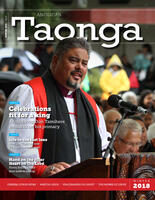
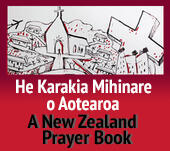
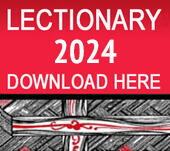


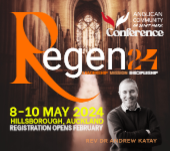
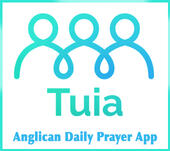




Comments
Log in or create a user account to comment.